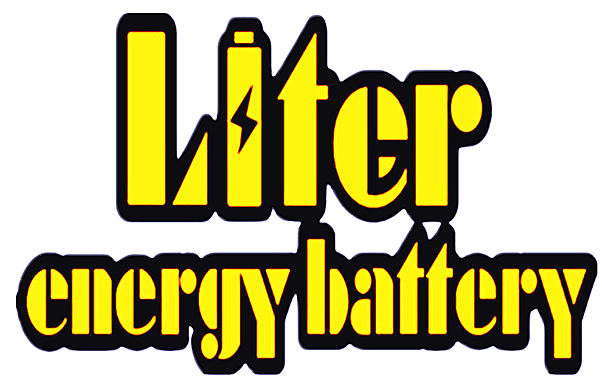IEC62133
IEC62133-2:2017 of lipo battery

On February 7, 2017, the IEC organization (International Electrotechnical Commission) updated the current portable sealed secondary battery cells and batteries (group) standard IEC 62133:2012 containing alkaline or non-acid electrolytes; In 2012, the IEC 62133:2012 second edition was released and the IEC 62133 standard was upgraded and revised again. If you need this test report, we can heLiter you to get IEC62133-2:2017
The Changes in the Test content of lipo batteries
1. Your content goes here. Edit or remove this text inline or in the module Content settings. You can also style every aspect of this content in the module Design settings and even apply custom CSS to this text in the module Advanced settings.
2. With regard to the external short-circuit test, the test temperature of the cell is modified to be carried out at 55 °C ± 5 °C. The battery pack is tested at room temperature and increases the requirement for the failure of a single protective component during the battery test;
3. The termination condition of the extrusion test deletes the parameter requirement of “10% deformation” and retains the original 13KN or 1/3 initial pressure drop requirement;
4. Drop test increases metal drop surface except cement drop
5. The overcharge test voltage is changed to a single 1.4 times charging upper limit voltage (but not exceeding 6V) and a multi-section 1.2 times charging upper limit voltage;
6. The heat abuse test time was changed from 10min to 30min; 7. Add mechanical testing (vibration and shock) to remove shipping test requirements.
8. Increased the need for a user-replaceable small battery that meets the swallowing gauge, requiring a warning sign to the minimum package of the battery
The changes related to lipo cells
Cancel Unnecessary Tests with Different Standards
The main point is to remove the items covered by the United Nations Manual Of Tests and Criteria(UN38.3). What deleted are: 1.Vibration 2.Mechanical Shock 3.Low Pressure(Altitude Simulation) 4.Cell Protection Against High Rate Charging (not UN38.3 test)
New Requirements
The most significant change in the second edition is the addition of a new test——Forced Internal Short Circuit Test. The test procedure very explicitly describes a method that requires the test facility to fully charge a Li-Ion cell, then open it and remove the jellyroll. Once the battery is removed from the can, a small Nickel particle of a specific shape and size is to be placed in a particular location of the cell jellyroll. Following the placement of the particle, the affected jellyroll is to be crushed.
Modify Existing Tests
The most important of these changes are related to how the sample is prepared for testing. In the first edition of the standard, samples were charged at room temperature (20°C ±5°C) according to the manufacturer’s recommended charging method. The second edition includes two charging processes: one at room temperature, and one new program at high and low specified operating temperature ranges (10°C and 45°C if not stated). The new charging method also requires charging at the maximum rated charge current of the product. This process only requires samples at the cell level for short circuits, thermal abuse, crushing, and forced quick internal tests. In the constant voltage test, a continuous low-rate charge test was corrected to a constant charge. This modified test requires the battery to be charged for seven days at the manufacturer’s recommended charge current and voltage limits. Modifications to the crash test included clarification of the trial, indicating that the crushing only needs to be done along the broadside of the cell. Also, termination criteria for 10% deformation of cells were also added. A more significant change is to divide the short circuit into separate parts of the battery and the battery. The second version of the lithium-ion cell was modified to contain only one test temperature and provide a more stringent range of circuit resistances.
The changes related to lipo battery
Revised Charging Procedure
Related to the cell level charging process changes, the lithium-ion battery level will have a modified charging process, but this will only affect the battery level of a test. This change comes from Japan’s lithium-ion battery and battery test requirements, and it states that samples used for short-circuit testing must be charged in an environment that is equal to the ambient temperature upper and lower: assumes 45°C and 10°C if not provided by the manufacturer. All other tested units on the battery level were charged at room temperature (20°C).
Reduced Sample Requirement
The subcommittee’s test requirements for lithium-ion batteries are more comprehensive than ever. Therefore, the amount of test required by IEC 62133-2:2017 at the battery level has dropped significantly. The testing that has been completely removed as a result of this review is:
• Vibration
• Temperature Cycling
• Mechanical Shock
The result is that the change reduces the required number of samples for testing from 31 for First Edition testing to 21 for Second Edition testing.
New Test
A new test has also been added to the battery level, designed to simulate the battery charging time longer than the manufacturer’s use of a higher charging rate. This test is performed on a fully discharged five battery packs, and the charge the batteries with a current of two times the rated current, and an upper voltage limit that is set to the maximum voltage available from the charger to the battery. If you do not know the charger’s maximum voltage, 5 volts per cell (or cell string) will be used. The current is maintained until the maximum charge voltage is reached and the temperature is monitored during the test. The termination of the trial is defined as the temperature is stable, the highest voltage is reached, with acceptance criteria of no fire and no explosion.
Preview of Liter 672030 IEC62133-2:2017 test report
